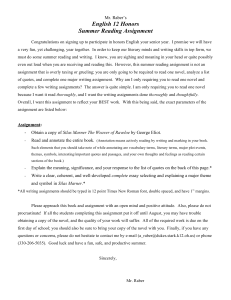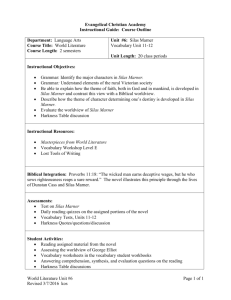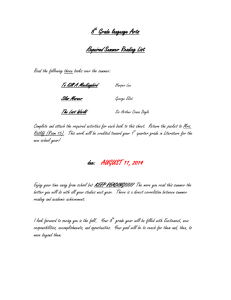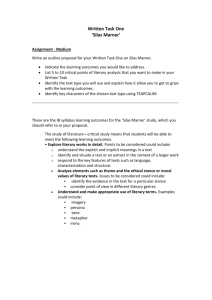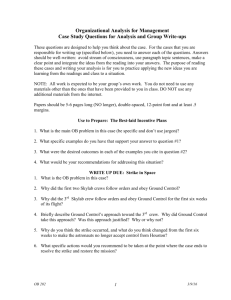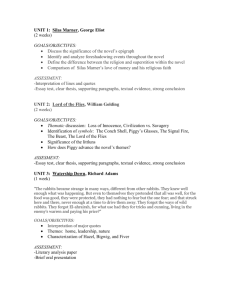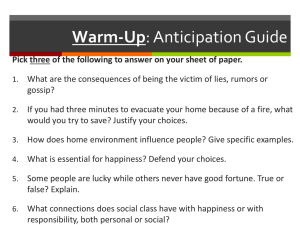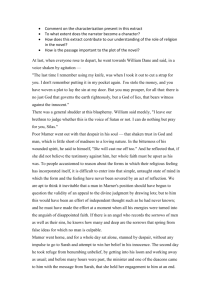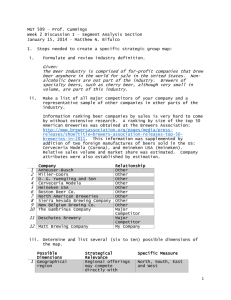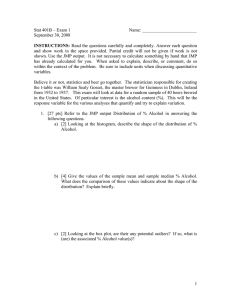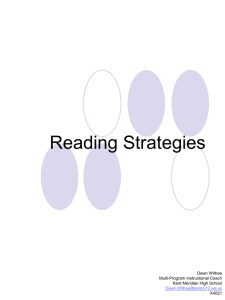anticipation guides
advertisement
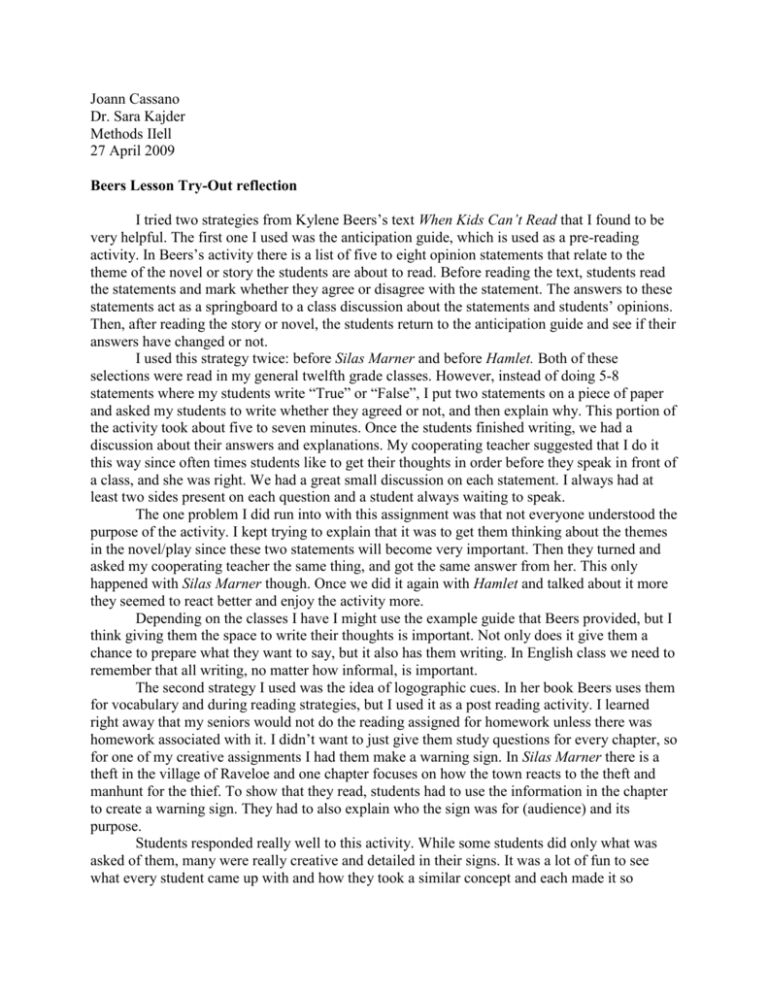
Joann Cassano Dr. Sara Kajder Methods IIell 27 April 2009 Beers Lesson Try-Out reflection I tried two strategies from Kylene Beers’s text When Kids Can’t Read that I found to be very helpful. The first one I used was the anticipation guide, which is used as a pre-reading activity. In Beers’s activity there is a list of five to eight opinion statements that relate to the theme of the novel or story the students are about to read. Before reading the text, students read the statements and mark whether they agree or disagree with the statement. The answers to these statements act as a springboard to a class discussion about the statements and students’ opinions. Then, after reading the story or novel, the students return to the anticipation guide and see if their answers have changed or not. I used this strategy twice: before Silas Marner and before Hamlet. Both of these selections were read in my general twelfth grade classes. However, instead of doing 5-8 statements where my students write “True” or “False”, I put two statements on a piece of paper and asked my students to write whether they agreed or not, and then explain why. This portion of the activity took about five to seven minutes. Once the students finished writing, we had a discussion about their answers and explanations. My cooperating teacher suggested that I do it this way since often times students like to get their thoughts in order before they speak in front of a class, and she was right. We had a great small discussion on each statement. I always had at least two sides present on each question and a student always waiting to speak. The one problem I did run into with this assignment was that not everyone understood the purpose of the activity. I kept trying to explain that it was to get them thinking about the themes in the novel/play since these two statements will become very important. Then they turned and asked my cooperating teacher the same thing, and got the same answer from her. This only happened with Silas Marner though. Once we did it again with Hamlet and talked about it more they seemed to react better and enjoy the activity more. Depending on the classes I have I might use the example guide that Beers provided, but I think giving them the space to write their thoughts is important. Not only does it give them a chance to prepare what they want to say, but it also has them writing. In English class we need to remember that all writing, no matter how informal, is important. The second strategy I used was the idea of logographic cues. In her book Beers uses them for vocabulary and during reading strategies, but I used it as a post reading activity. I learned right away that my seniors would not do the reading assigned for homework unless there was homework associated with it. I didn’t want to just give them study questions for every chapter, so for one of my creative assignments I had them make a warning sign. In Silas Marner there is a theft in the village of Raveloe and one chapter focuses on how the town reacts to the theft and manhunt for the thief. To show that they read, students had to use the information in the chapter to create a warning sign. They had to also explain who the sign was for (audience) and its purpose. Students responded really well to this activity. While some students did only what was asked of them, many were really creative and detailed in their signs. It was a lot of fun to see what every student came up with and how they took a similar concept and each made it so different. Even though most of my students aren’t artists, they still seemed excited to have done it. Some were eager to share their signs the next day. One student even asked if we were going to do it again. This is a key reminder that while writing is important for English, understanding the main point of a story or selection is just as important. We need to find creative ways to help every learner get those main points. The creativity helps them interact with the text instead of read it passively. If they can’t understand the main point then they don’t have anything to write about. Even though my juniors are advanced I sort of adapted the logographic cues idea to them as well. I had created a timeline of F. Scott Fitzgerald’s life and asked the students to create something similar for the protagonist in “Winter Dreams” so they can see the similarities between the two lives. The timelines helped the students in discussion because they had already thought about and analyzed the text some. I think I’ll have them do something with creating a day’s path for them while we work on Eudora Welty’s “A Worn Path”. I realize that these aren’t pictures, but it still draws on that idea of using a visual to enhance the understanding of a story.
